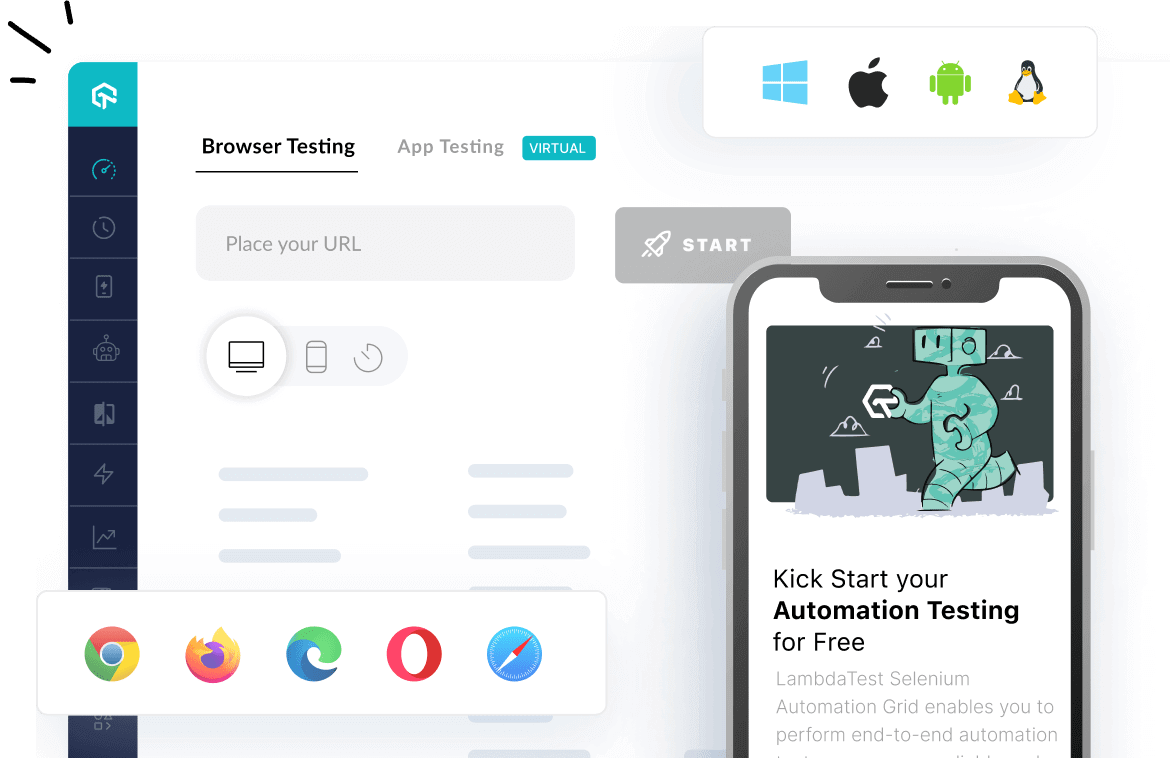How to use shadow_root method of Capybara.Driver Package
Best Capybara code snippet using Capybara.Driver.shadow_root
selenium_spec_safari.rb
Source:selenium_spec_safari.rb
...71 pending 'w3c_click_offset is not currently supported with safaridriver'72 when 'Capybara::Session selenium_safari #go_back should fetch a response from the driver from the previous page',73 'Capybara::Session selenium_safari #go_forward should fetch a response from the driver from the previous page'74 skip 'safaridriver loses the ability to find elements in the document after `go_back`'75 when 'Capybara::Session selenium node #shadow_root should get the shadow root',76 'Capybara::Session selenium node #shadow_root should find elements inside the shadow dom using CSS',77 'Capybara::Session selenium node #shadow_root should find nested shadow roots'78 pending "Safari doesn't yet have W3C shadow root support"79 end80end81RSpec.describe 'Capybara::Session with safari' do82 include Capybara::SpecHelper83 ['Capybara::Session', 'Capybara::Node', Capybara::RSpecMatchers].each do |examples|84 include_examples examples, TestSessions::Safari, SAFARI_DRIVER85 end86 context 'storage' do87 describe '#reset!' do88 it 'clears storage by default' do89 session = TestSessions::Safari90 session.visit('/with_js')91 session.find(:css, '#set-storage').click...shadowdom.rb
Source:shadowdom.rb
1# frozen_string_literal: true2require_relative "node/shadow_root"3require_relative "shadow_dom/version"4module Capybara5 module ShadowDOM6 ROOT_KEY = "shadow-6066-11e4-a52e-4f735466cecf"7 # Adds a way to retrieve the shadow root object of an element. For example, given the HTML below:8 #9 # <awesome-element>10 # <!-- #shadow-root start -->11 # <span>Hello shadow world!</span>12 #13 # <input type="text" id="user_name">14 # <!-- #shadow-root end -->15 # </awesome-element>16 #17 # Then You will be able to do:18 #19 # within custom_element.shadow_root do20 # # Displays "Hello shadow world!":21 # puts page.text22 #23 # # Asserts the text within the element:24 # assert_text "Hello shadow world!"25 #26 # # Input elements within the shadow DOM will also be accessible:27 # fill_in "#user_name", with: "awesome@example.org"28 # end29 #30 def shadow_root31 root_node = synchronize { evaluate_script("this.shadowRoot") }32 return if root_node.nil?33 node = if defined?(::Selenium::WebDriver::ShadowRoot) && root_node.is_a?(::Selenium::WebDriver::ShadowRoot)34 # Selenium >= 4.1.x35 driver.send(:build_node, root_node)36 elsif root_node.is_a?(Hash)37 bridge = session.driver.browser.send(:bridge)38 shadow_key = if defined?(::Selenium::WebDriver::ShadowRoot)39 # Selenium ~> 4.0.x40 ::Selenium::WebDriver::ShadowRoot::ROOT_KEY41 else42 # Selenium ~> 3.x43 ROOT_KEY44 end...base_helper.rb
Source:base_helper.rb
...32 Array.new(number) { charset.sample }.join33 end34 def get_shadow_dom(host, element)35 root = page.driver.browser.find_element(:css, host)36 shadow_root = page.execute_script('return arguments[0].shadowRoot', root)37 shadow_root.find_element(:css,element)38 end39 def is_shadow_dom_exist?(host, element)40 begin41 root = page.driver.browser.find_element(:css, host)42 shadow_root = page.execute_script('return arguments[0].shadowRoot', root)43 shadow_root.find_element(:css,element)44 return true45 rescue46 puts 'element not found'47 return false48 end49 end50end...shadow_root
Using AI Code Generation
1 Capybara::Poltergeist::Driver.new(app, js_errors: false, phantomjs_options: ['--debug=no', '--load-images=no', '--ignore-ssl-errors=yes', '--ssl-protocol=any', '--web-security=false'])2 def shadow_root(selector)3 puts page.has_css?('paper-input input', visible: :spatialshadow_root
Using AI Code Generation
1 def shadow_root(selector)2 node = find(selector)3 @browser.evaluate_script("return arguments[0].shadowRoot", node.native)4puts Capybara.shadow_root('h1').textshadow_root
Using AI Code Generation
1 Capybara::Poltergeist::Driver.new(app, {js_errors: false, phantomjs_options: ['--ignore-ssl-errors=yes', '--ssl-protocol=any']})2 visit('/')3 def search_for(keyword)4 @search_field.set(keyword)5Example.new.search_for('Capybara')6 Capybara::Poltergeist::Driver.new(app, {js_errors: false, phantomjs_options: ['--ignore-ssl-errors=yes', '--ssl-protocol=any']})7 visit('/')8 def search_for(keyword)9 @search_field.set(keyword)10 def shadow_root(tag, selector)11 find(tag).shadow_root.find(selector)12Example.new.search_for('Capybara')shadow_root
Using AI Code Generation
1 def shadow_root(selector)2 node = find(selector)3 @browser.evaluate_script("return arguments[0].shadowRoot", node.native)4puts Capybara.shadow_root('h1').textshadow_root
Using AI Code Generation
1 Capybara::Poltergeist::Driver.new(app, js_errors: false, phantomjs_options: ['--debug=no', '--load-images=no', '--ignore-ssl-errors=yes', '--ssl-protocol=any', '--web-security=false'])2 def shadow_root(selector)3 puts page.has_css?('paper-input input', visible: :spatialshadow_root
Using AI Code Generation
1 d c shadow_root(element)2 evaluate_script("return arguments[0].shadowRoot", element)3 drivor.shadow_root( elf)4 evaluate_script("return this.shadowRoot")5 evaluate_script("return this.shadowRoot")6 evaluate_script("return this.shadowRoot")7 evaluate_script("return this.shadowRoot")8 evaluate_script("return this.shadowRoot")9 evaluate_script("return this.shadowRoot")10 evaluate_script("return this.shadowRoot")11 evaluate_script("return this.shadowRoot")12 def shadow_root(selector)13 puts page.shadow_root('x-app').find('x-button').textshadow_root
Using AI Code Generation
1 def shadow_root(element)2 evaluate_script("return arguments[0].shadowRoot", element)3 driver.shadow_root(self)4 evaluate_script("return this.shadowRoot")5 evaluate_script("return this.shadowRoot")6 evaluate_script("return this.shadowRoot")7 evaluate_script("return this.shadowRoot")8 evaluate_script("return this.shadowRoot")9 evaluate_script("return this.shadowRoot")10 evaluate_script("return this.shadowRoot")11 evaluate_script("return this.shadowRoot")shadow_root
Using AI Code Generation
1 def shadow_root(selector)2 (function(selector) {3 var element = document.querySelector(selector);4 return element.shadowRoot;5 def shadow_root(selector)6 driver.shadow_root(selector)7 @session.shadow_root(native)8 @session.shadow_root(native)9Capybara.visit('https://www.google.com')10Capybara.find('google-app').shadow_root.find('input').set('Capybara')11Capybara.find('google-app').shadow_root.find('button').clickAutomation Testing Tutorials
Learn to execute automation testing from scratch with LambdaTest Learning Hub. Right from setting up the prerequisites to run your first automation test, to following best practices and diving deeper into advanced test scenarios. LambdaTest Learning Hubs compile a list of step-by-step guides to help you be proficient with different test automation frameworks i.e. Selenium, Cypress, TestNG etc.
LambdaTest Learning Hubs:
- JUnit Tutorial
- TestNG Tutorial
- Webdriver Tutorial
- WebDriverIO Tutorial
- Protractor Tutorial
- Selenium 4 Tutorial
- Jenkins Tutorial
- NUnit Tutorial
- Jest Tutorial
- Playwright Tutorial
- Cypress Tutorial
- PyTest Tutorial
YouTube
You could also refer to video tutorials over LambdaTest YouTube channel to get step by step demonstration from industry experts.
Try LambdaTest Now !!
Get 100 minutes of automation test minutes FREE!!

